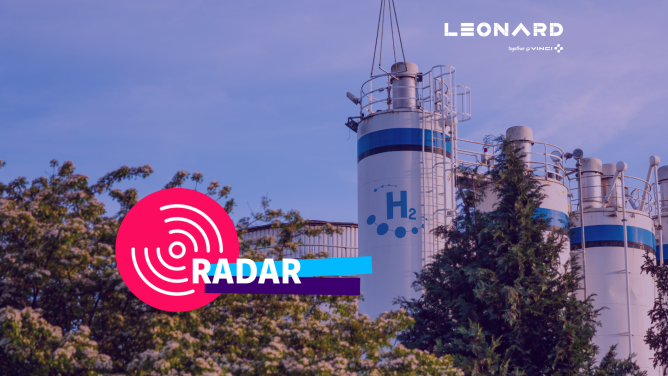Context
Air and maritime transport respectively emit 915 million tonnes and 940 million tonnes of CO2 annually, accounting each for around 2,5% of worldwide CO2 emissions. With significant demand growth projected over the next decades and looming decarbonization targets, the need for emission mitigation measures and low-carbon technologies is pressing in these two sectors. Both have pledged to cut their CO2 emissions at least by half by 2050 vs 2005 levels for the aviation sector and vs 2008 levels for the maritime industry, with some key players even targeting carbon neutrality by 2050.
If change has been slow until now, the FitFor55 regulatory package proposed by the European Commission in July 2021 could induce more rapid change by strengthening the current cap-and-trade CO2 market for aviation and creating a new CO2 trading system for maritime emissions.
Air mobility
Reducing aircraft emissions
In 2019, 4.5 billion passengers and 58 million tonnes of freight were carried by the world’s airlines. With the aviation industry expected to double by 2050 (i.e. 8 billion passengers projected by 2050) it is essential to reduce aviation carbon emissions. To that end, several solutions could be leveraged in addition to continuously improving ground operation, air traffic and current technologies:
- Sustainable Aviation Fuels (SAF) produced from feedstock can be blended at up to 50% with conventional jet fuel and offer significant lifecycle carbon reductions without any modification to current aircrafts/engines and fuel distribution infrastructures. However, SAF don’t offer a fully decarbonized option and depend on the availability of biomass or other
- Hydrogen can be used by aircrafts in different ways
- Green hydrogen (i.e. produced through water electrolysis powered by renewable electricity sources) can be combined with CO2, creating a lifecycle CO2 reduction, to produce synthetic biofuels which, like SAF, can then be mixed with fossils fuels and used in conventional jet
- Hydrogen in liquid form can be directly used as a fuel and burned in modified gas turbines
- Hydrogen in liquid form can be converted into electric power by a fuel cell and used by an aircraft powered by electric engines
To meet mass adoption, hydrogen powered aircrafts will need to address the following challenges:
- Given the low volumetric energy density of hydrogen, its liquid form is preferred by the aviation industry to store more energy onboard future aircrafts. Since this will require new aircraft and tank designs, fleet turnover would need to accelerate. A recent McKinsey/ Fuel Cells and Hydrogen Joint Undertaking report projects only 40% of short-haul and medium-haul fleet replaced by 2050 in its most optimistic
- Electric engines are currently not suitable because of the instant take-off power needs of commercial aircrafts (except small ones with very limited number of seats).
Adapting airport platforms
The production and distribution of these alternative fuels will change airports as we know them today. If SAF or synthetic fuels will have no operational impact because their handling and distribution is identical to jet A1 conventional fuel, the introduction of gaseous and liquid hydrogen will require significant adaptation of airport platforms and regulations. Local production and distribution of hydrogen might be more adequate to address both airside and landside demands, i.e. demands from Ground Support Equipment, heavy duty mobility related to cargo and logistics activities, as well as demands coming from airport ecosystems. With the introduction of liquid hydrogen, cryogenic hydrogen handling would be required across the storage and distribution line, requiring airport operators to acquire new specific equipment and expertise.
Ultimately, the industry predicts that airports tomorrow will basically come down to large hydrogen production and distribution hubs servicing both aviation and local hydrogen demands.
Need for collaborative actions across the entire ecosystem
Today the entire value chain of aviation seems to be jumping on the hydrogen wagon to make it one of the center pieces of tomorrow decarbonized aviation:
- Aircraft manufacturers like Airbus show clear medium-term ambitions for hydrogen powered short and medium-haul, with long-haul on the longer term. Its rival Boeing remains notably out of the race at this Pipistrel, which produces 10-passenger airplanes, has its first hydrogen model up and flying. Startups are also looking to disrupt this space; e.g. Universal Hydrogen with their modular pods for easier storage , ZeroAvia…
- Airlines like British Airways, SAS, EasyJet have expressed clear interest in hydrogen power planes
- Airport operators like Vinci Airports are launching first experiments (e.g. at Lyon St-Exupéry airport) to learn and start building valuable partnerships for hydrogen production and distribution on and around
Maritime mobility
Approximately 90% of world goods are carried by sea. This represented in 2019 around 11 billion tonnes of freight and this demand is expected to grow anywhere from 50% to 250% by 2050.
Reducing vessel emissions
To reach the greenhouse gas emission reductions set by the International Maritime Organization the industry will have to leverage different technologies:
- For smaller vessels (river boats, ferries, barges):
- Electric batteries might be used but their low energy density limits them to lighter applications
- Hydrogen in its liquid form could be used in fuel cells to power electric The Norwegian operator Norled has just received a liquid hydrogen ferry, the “MF Hydra”, with a capacity of 300 passengers and 80 cars.
- For larger vessels travelling across oceans (freighters, tankers…):
- Liquefied Natural Gas (LNG) already offers benefits in reduction of air pollutants (NOX, SOX, and particles) but doesn’t provide a fully decarbonized solution as LNG is a fossil fuel that emits CO2 (i.e. CO2 reduction around 20%). If LNG carriers already use LNG for their propulsion, more and more vessels not carrying LNG switch to LNG as a greener
- Biofuels can be incorporated to diesel to start reducing CO2 emissions and can even be considered carbon-neutral from a lifecycle viewpoint when not blended with diesel since the biomass used for their production absorbed CO2. However, their limit lays in the availability of biomass (i.e. competition with food production)
- Green ammonia (NH3) can be produced through the Haber-Bosch process which combines green hydrogen produced by electrolysis and nitrogen separated from the The ammonia can then be either directly burned into an internal combustion engine or used through specific fuel cells to produce electric power.
The maritime industry currently predicts that green ammonia could be the best path towards zero-carbon long haul sea shipping given its following benefits:
- Ammonia doesn’t require large cryogenic onboard storage like liquid hydrogen, which could impact the available payload of large cargo ships
- Ammonia has twice the energy density of hydrogen and can be stored in its liquid form at ambient temperature
- Ammonia being today a major chemical feedstock used in several applications (e.g. fertilizers), the shipping industry is already used to handle ammonia, and storage and distribution infrastructures are already in place
Vessels turnover
Vessel lifetimes typically range from 20 to 30 years depending on ship types (oil or gas tankers, container ships, general cargo ships, bulk carriers…). If biofuels can be used in existing engines, the use of hydrogen and ammonia would either require adaptations of current engines if burned directly as a fuel, or complete new powertrain lines if used through fuel cells. The latter option requires complete vessel replacement and would hence be linked to vessel turnover cycles.
Need for collaborative actions across the entire ecosystem
Partnerships and coalitions would be necessary across the maritime shipping value chain to finance research and development efforts and spread adoption throughout the industry. This is especially necessary for this industry as most technologies envisaged are still in their very early prototyping stage.
Maersk McKinney Moller Center for Zero Carbon Shipping is an interesting example of industrial cluster with the ambition to define a common transition strategy and foster technology developments to meet the sector GHG emission reduction targets.
Conclusion
Air and maritime mobilities are still seeking for the most adequate energy to power their heavy and long-haul applications, for which electric batteries have significant limitations. If hydrogen will be one of the pathways enabling these industries to follow through on their pledge to cut their emissions by at least half by 2050 or even be carbon neutral at this date, challenges relating to the adaptation of port and airport infrastructures, slow aircraft and vessel turnovers, and interoperability inherent to intercontinental shipping, will need to be addressed by all stake holders of these industries, i.e. manufacturers (plane and boat OEMs), carriers (airlines, ship lines), and infrastructure operators (airports, ports operators).
Ongoing projects within VINCI
- Within VINCI Energies, Barillec Marine already contributes to this transition by developing electric or hybrid powertrains for maritime
- VINCI Airports is currently launching a hydrogen hub at Lyon St-Exupéry airport in partnership with Vinci Construction and Eurovia capable of distributing between 500 kg and 2 tonnes of hydrogen per day to address aviation, heavy and light-duty mobility and industrial needs in the
- VINCI Construction’s HyMobility business unit dedicated to hydrogen projects is currently working on an ammonia production project at the Grand Port de Bordeaux and a river mobility project in Nanterre in collaboration with Shell
Sources:
https://www.atag.org/facts-figures.html
https://ec.europa.eu/clima/policies/transport/shipping_en
https://www.icao.int/annual-report-2019/Pages/the-world-of-air-transport-in-2019_fr.aspx
https://spectrum.ieee.org/why-the-shipping-industry-is-betting-big-on-ammonia
Read also:
> Low-carbon production of hydrogen
> Transport and storage of hydrogen

